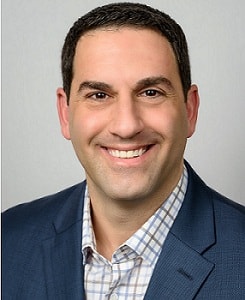
“He who controls information controls the world.” This quote, which sounds like it should be from a famous world leader but is actually from a character on the sci-fi program “Babylon 5,” perfectly describes the opportunity life sciences organization marketers have before them today.
As healthcare continues its rapid march toward value-based care, providers are increasingly being held responsible for patient (and financial) outcomes. Yet many of them are taking on this risk essentially half-blinded.
Thanks to electronic health records (EHRs) they have a better view than ever of the care being provided within their own organizations. What they can’t see, however, are the medications and devices that are being prescribed to those patients outside their own practice or health system. Since those prescriptions could have a significant impact on the outcomes, having access to that data would increase their chances for success exponentially.
That’s the opportunity awaiting life sciences commercial effectiveness teams today. Rather than simply being purveyors of products, commercial effectiveness teams can use their access to data from a broad range of healthcare organizations to change the way care is delivered on an individual and population basis. Because by feeding the data from those disparate healthcare organizations into next-generation predictive analytics, they can develop insights that help providers recognize trends and issues before they become costly problems. They can also identify which treatments have proven most effective for patients with isolate or co-morbid conditions, helping drive better outcomes while reducing waste, duplication, and the overall cost of care.
Here are some of the ways life sciences organizations can use their access to data to move from a sales-oriented to a collaborative relationship with providers.
Seeing the trends within the symptoms
Providers are trained from day one to place their focus on the patient in front of them. While that’s good for the individual, this narrow view may prevent them from recognizing that one patient’s issues are part of a larger pattern. Even if they do, they may not have access to the data or tools to confirm their suspicions.
A life sciences organization running next-generation analytics can help fill in the blank spaces. For example, it can feed data about its diabetes medication sales, along with prescription and claims data obtained from a multitude of providers, and overlay the results on a geographical map to determine areas where diabetes “hot spots” exist. It can even create personas that represent segments of the overall population who share similar attributes by adding in Zip+4, demographic, and socioeconomic data into the analytics.
Providers can use this information to match the highest-risk personas to their patient panels and implement a diabetes detection program for those who qualify. They may even make a determination to start them on preventive treatment, or a diabetes education program, to avoid or at least delay development of that costly chronic condition.
Here’s a more concrete example of how it works. We’ll start with a provider who works with a large Hispanic population. Statistically, those with Hispanic ethnicity tend to exhibit higher instances of diabetes that other groups. Knowing that a provider works with a large Hispanic population, the life sciences organization can run analytics that show whether the general population within a specific provider’s geographic coverage is following that pattern.
If so, providers can then use their population health management technologies to identify patients who fit the persona but have not been diagnosed yet. Providers can start those patients on a program to have their HbA1c levels checked on a more regular basis.
By using the data to discover potential undiagnosed populations, life sciences organizations can help providers meet value-based care outcomes targets, including reducing short- and long-term costs, while delivering better care to their patients.
Go beyond clinical trials data
In most cases, the data about the effectiveness of a particular life sciences product is drawn from clinical trials. While important, clinical trials typically only represent a small percentage of the overall population with a particular condition. The fact that only 5 percent of all adult cancer patients participate in a clinical trial is just one example. This issue is exacerbated by the fact that most participants in these clinical trials tend to be healthy (other than having cancer), while the larger population can have all sorts of co-morbid conditions and issues that affect treatment.
The numbers break down even more when it comes to minorities, who continue to be severely underrepresented in clinical trials. With all the variables that can affect the success of a treatment, it’s difficult for providers to be confident that the treatments they’re prescribing will be effective for their specific patients’ needs.
Life sciences organizations can change that perception by using data and analytics to demonstrate the value of their products with much greater precision. By analyzing usage and outcomes data from a broad cross-section of providers, they can detail how effective their products have been in managing or resolving a particular condition across specific populations/personas and relative to defined co-morbidities.
Armed with this information, commercial effectiveness teams can help lead providers to care decisions that will have the highest likelihood of yielding the best results. While not quite personalized medicine, it is definitely a step in that direction.
Information is (selling) power
Whether a life sciences organization is trying to break a competitor’s hold on a market or fend off lower-priced suppliers, great products alone are no longer enough.
By leveraging readily available data and next-generation analytics, commercial effectiveness teams can use collaboration around valuable information to build a stronger relationship with providers and deliver a world’s worth of value to them.
John Pagliuca is Vice President, Life Sciences at SCIO Health Analytics, where he leads the global commercialization efforts of SCIO’s advanced analytics and SaaS solution suite within the Life Science market. He has more than 18 years of sales, marketing and technology experience in quantitative analytics and SaaS solutions for Life Sciences.

